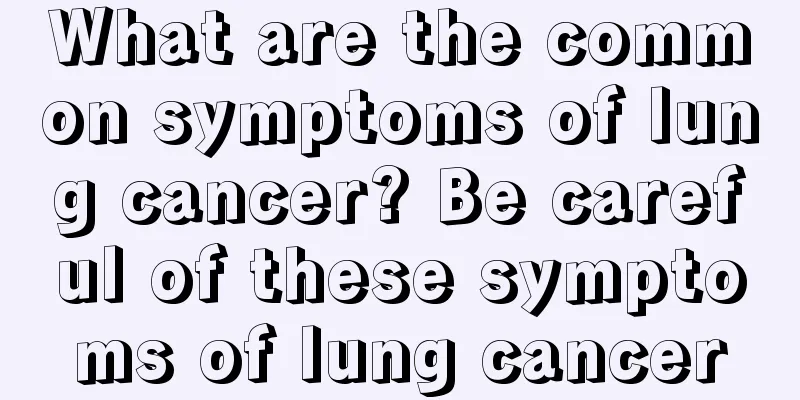What are the common symptoms of lung cancer? Be careful of these symptoms of lung cancer

|
The early symptoms of lung cancer are very complicated, and one thing that needs to be noted is that whether the symptoms of lung cancer are obvious is directly related to the stage of the patient's condition. In most cases, coughing is the most common symptom of lung cancer, and coughing is accompanied by hemoptysis. The following is an introduction to the symptoms of lung cancer; Let's talk about cough first. It is the earliest and most common symptom of lung cancer patients. Because the onset is often similar to a cold or bronchitis, it is easy to be ignored. Therefore, people who have no chronic respiratory diseases in the past, especially those over 40 years old, should be alert to the possibility of lung cancer if the cough persists for more than 3 weeks after active treatment, and further examination is necessary. As for elderly patients with chronic bronchitis, the incidence of lung cancer is higher than that of ordinary people, but their early cough symptoms are often easily confused with the original chronic cough, and diagnosis is often delayed. At this time, we must pay attention to the changes in the nature and pattern of coughing. Due to the stimulation of cancerous tissue on the bronchial mucosa, lung cancer patients often have irritating coughs and severe coughs with little sputum, which is inconsistent with the original seasonal pattern of onset. Active anti-infection treatment is ineffective and the symptoms become worse. Hemoptysis is the second most common symptom of lung cancer, which is often caused by cancer tissue invading the bronchial mucosa. The amount of hemoptysis is usually small, often with bloody sputum, which can last for weeks or months or occur intermittently. Since the amount of hemoptysis is small or occurs intermittently, it is easy to be neglected. In fact, about 1/4 of those who have bloody sputum in middle-aged and older people are caused by lung cancer. Therefore, when bloody sputum appears for unknown reasons, do not be careless. Chest pain is also a common symptom of lung cancer. Especially for peripheral lung cancer, chest pain may be the first symptom. It is caused by the infiltration of the pleura by cancerous tissue. Chest pain is often fixed at the site of the lesion, and in the early stage, it is often intermittent pain and discomfort. Coughing can make it worse. Therefore, if chest pain occurs in a fixed location for unknown reasons, corresponding examinations should be carried out early. Lung cancer is currently a very common malignant tumor, and there is a very clear high-incidence group. One thing that needs to be vigilant is that if obvious symptoms are detected, it is generally advanced lung cancer. It is recommended that the high-incidence group of lung cancer undergo a physical examination in time so that lung cancer can be diagnosed in time. |
>>: What are the main symptoms of lung cancer? Beware of these common symptoms of lung cancer
Recommend
What are the dangers of inferior lipstick
Lipstick is the most common cosmetic. Applying li...
Can loofah really remove spots?
Every woman hopes to have skin as silky and trans...
How much does a skin cancer check cost
Sometimes when we face the disease of skin cancer...
What are the benefits of acupuncture during the dog days?
The dog days of summer are the hottest time of th...
What does a mullet look like
Mullet, also known as snakehead fish or raw fish,...
Symptoms of atrophic urethritis
Atrophic urethritis is a chronic disease. Patient...
How to treat ankylosing cervical spondylitis
For patients with ankylosing cervical spondylitis...
Which smokers will develop lung cancer? If you have these symptoms, you should pay attention to lung cancer
Lung cancer is the most common primary malignant ...
Can I move in if the formaldehyde is 04?
As we all know, there will be some gases harmful ...
There is too much flesh on the nose
The nose is located in the center of the human fa...
How to change skin from oily to dry
For friends with oily skin, skin problems such as...
What are the symptoms of gastric stump cancer pictures
Many people do not understand what are the sympto...
Clinical manifestations of stomach yin deficiency
Nowadays, many young people have some stomach dis...
Why does it hurt so much after taking penicillin
People who are usually weak and often deal with p...
What should you pay attention to when exercising with teratoma
Ovarian teratoma is a common gynecological tumor ...









